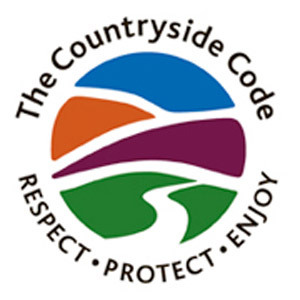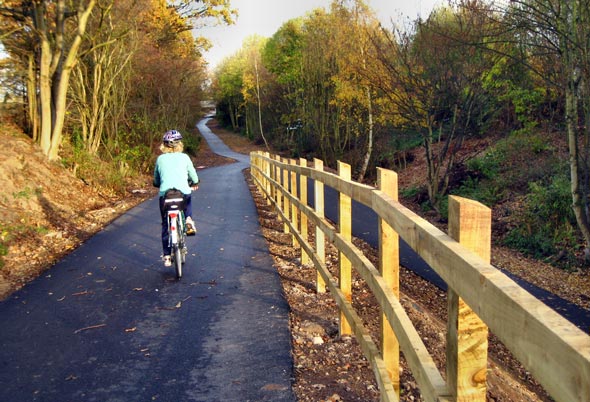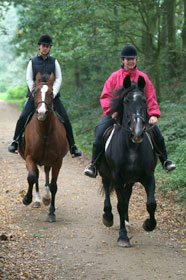|
| HOME | The Countryside Code | Code of Conduct for Insect Collecting |
 The Countryside Code started life in the 1950s as the Country Code. A new version was launched in July 2004 and has since been updated. The Countryside Code applies to all parts of the countryside. Most of it is just good commonsense, as it’s designed to help us all to respect, protect and enjoy our countryside. The Code, which applies in England and Wales, makes it clear what the responsibilities are for both the public and the people who manage the land. The Countryside Code started life in the 1950s as the Country Code. A new version was launched in July 2004 and has since been updated. The Countryside Code applies to all parts of the countryside. Most of it is just good commonsense, as it’s designed to help us all to respect, protect and enjoy our countryside. The Code, which applies in England and Wales, makes it clear what the responsibilities are for both the public and the people who manage the land.
There are 5 sections of the Code dedicated to helping members of the public Respect, Protect and Enjoy the countryside. These are:
- Be safe, plan ahead and follow any signs.
- Leave gates and property as you find them.
- Protect plants and animals and take your litter home.
- Keep dogs under close control, especially near farm animals and during nesting season.
- Consider other people.
For more in depth information about the Countryside Code visit Natural England's website.

PDF, 2.72MB, 6 pages
Please follow the code of conduct for cycling:
- Keep to bridleways, byways and special cycle routes

- Ride under control
- Always wear a helmet
- Be considerate, slow down and signal your approach
- Ensure your bike is safe and be prepared for emergencies
- Put lights on in poor visibility
- Learn First Aid
- Wear reflective clothing
- Always carry and be able to use a map
- Tell someone where you are going
- Enjoy yourself
Please follow a code for responsible horse riding:
- Keep to bridleways, byways and special riding routes

- Plan your route
- Always wear a helmet
- Be considerate to local farmers, their stock and other users
- Do not ride in large groups (never more than 12)
- Do not jump hedgerows or fallen timber
- Take care on country lanes
- Take home all droppings and straw that may be deposited in parking areas
- Have a good time.
The British Horse Society Leaflet on Horse riding and Cycling Guidance
Countryside Access Charter
RIGHTS OF WAY:
- Public footpath - on foot only.
- Bridle-ways - on foot, horseback and pedal cycles.
- Byways (usually old roads), most roads used as public paths and public roads - all traffic has the right of way.
Use maps, signs and waymarks to check rights of way. Ordnance Survey Landranger maps show most public rights of way.
On rights of way you can:
- Take a pram, pushchair or wheelchair if practicable,
- Take a dog on a lead or under close control,
- Take a short route around an illegal obstruction or remove it sufficiently to get past.
WHEREVER YOU GO, FOLLOW THE COUNTRY CODE:
- Enjoy the countryside and respect its life and work
- Guard against all risk of fire
- Fasten all gates
- Keep to public paths across farmland
- Use gates and stiles to cross fences, hedges and walls
- Leave livestock, crops and machinery alone
- Take your litter home
- Help to keep all water clean
- Protect wildlife, plants and trees
- Take special care on country roads
- Make no unnecessary noise.
This Charter is for practical guidance in England and Wales only. It was prepared by The Countryside Agency, formerly The Countryside Commission. www.countrysideaccess.gov.uk/
What are your rights?
The sign "Trespassers will be Prosecuted" has frightened many people off a legal footpath but the true situation is nothing like as scary as it might seem. It is very hard to prosecute someone for trespass unless you can prove they caused wilful damage. If you adopt the Countryside Code this will not happen. Thankfully, landowners these days are more understanding than they were twenty years ago, you are more likely to find help than aggression so do not be put off.
A footpath or "public right of way" is just what it says, treat it like a pavement and do not wander onto other property. Strictly speaking the top 18 inches of soil on a footpath belongs to the County Council and not the landowner so you are not walking on his land but public land! Unlike other public highways a footpath is not maintained by the Council, it is the landowners responsibility to keep them navigable. Occasionally the Council may help with maintenance as part of a recreational policy but this in no ways removes the landowners responsibility to keep it clear. However, the Council is legally obliged to erect a sign where the path meets a public road. If the path is blocked or impassable you are legally entitled to remove the blockage or make a short detour around the obstacle.
What to do if challenged by a landowner:
- If you are approached by a landowner do not assume it is an aggressive challenge, usually they are just checking your intention and will offer help if asked for it.
- Everybody can make a genuine mistake on a footpath that is not clearly marked and the law understands this. Make it clear you are using the footpath from A to B and are having difficulty finding it. Tell them you have no intention of causing any damage. This establishes your legal position.
- Ask where the path is. Any reasonable person would respond with good advice.
- Explain you would be on the path if it were easy to find but as this is not the case you are left to your own devices.
If violence seems likely, either:-
- Withdraw, but state you will make a complaint to County Hall (ask for his/her name). The address for County Hall can be found in the local telephone directory or the library.
- If you are sure of your ground phone the police and ask for an escort to cross safely on a public footpath. You might have to wait for an officer to arrive.
The Ramblers Association:
THE RAMBLERS promote walking in the UK, protect rights of way, campaign for access to open country and defend the beauty of the countryside. Membership is not expensive, you get a very useful year book and a quarterly magazine. Many outdoor shops offer substantial discounts to members, you could easily recover your first year's membership with this alone. The Ramblers are organised on a County basis within which are a number of Groups offering regular walking programmes free to members. If you are new to outdoor walking and cautious about how to start you could do a lot worse than join them to learn the ropes. Apart from walking they engage in a wide variety of educational and charitable activities associated with the countryside, a respectable proportion of the membership join solely because they support this work.
Go to TOP
|


 The Countryside Code started life in the 1950s as the Country Code. A new version was launched in July 2004 and has since been updated. The Countryside Code applies to all parts of the countryside. Most of it is just good commonsense, as it’s designed to help us all to respect, protect and enjoy our countryside. The Code, which applies in England and Wales, makes it clear what the responsibilities are for both the public and the people who manage the land.
The Countryside Code started life in the 1950s as the Country Code. A new version was launched in July 2004 and has since been updated. The Countryside Code applies to all parts of the countryside. Most of it is just good commonsense, as it’s designed to help us all to respect, protect and enjoy our countryside. The Code, which applies in England and Wales, makes it clear what the responsibilities are for both the public and the people who manage the land.

